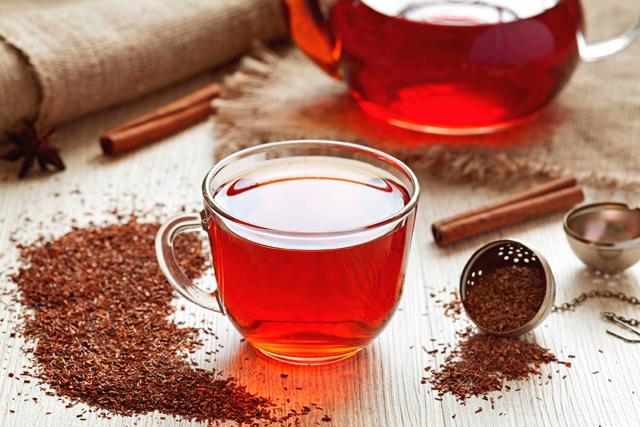You are here
African Red Bush tea
By Sheela Sheth - Oct 06,2019 - Last updated at Oct 06,2019

Photo courtesy of Family Flavours magazine
Rooibos tea (popularly known as African Red Bush tea) is a nutritional powerhouse with an earthy floral flavour. Grown in the mountain region of Cape of Good Hope, the leaves and the stems are both harvested to create this nutrient-dense herbal tea.
Rustic realm
Rooibos tea has been used in South Africa for centuries. Caffeine-free, it falls under the category of a herb and not a tea though it’s popularly used as a tea. Each blossom produces a legume pod that has a single seed; when ripe, the seed pops out of the pod and falls to the ground. It is known to ferment, get deeper in colour and intensify in flavour if left longer to steep.
Clinical contribution
A goldmine ofantioxidants, Rooibos tea contains two flavonoids and active minerals like vitamin C, iron, potassium, copper, calcium, zinc, manganese and sodium. It improves bone density, boosts the immune system and enhances liver function besides calming the nerves. It is also known to relieve infant colic, regulate hypertension, promote hydration, improve memory and prevent blood clots. Rich in polyphenols (micronutrients derived from plant-based foods), it helps improve digestion and also serves as a blood glucose regulator. Its antiviral, anti-inflammatory, anti-depressant properties have also helped in the treatment of Alzheimer and Parkinson disease.
Beauty booster
The zinc in the tea has skincare benefits, including the treatment of acne. The antioxidants are known to repair damaged skin, hair and bones. Its anti-ageing property has shown to inhibit or delay the appearance of wrinkles. The leptin in the tea helps prevent new fat cells from forming.
Culinary craze
Its rich amber colour when steeped in tea creates a versatile drink. Rooibos tea has been my favourite and its entry into my pantry has added flavour and sensation to my cooking. I use one tea bag or one teaspoon per three quarters cup of boiling water for flavouring soups and sauces. It could also be used as a tenderiser and for marinades. For that zesty flavour add lemon rind to the mixture. When steeped longer, it ferments and loses its flavour but turns amber red.
Reprinted with permission from Family Flavours magazine
Related Articles
AMULREE, United Kingdom — Tam O’Braan has had several lives.
A study published in the peer-reviewed European Journal of Preventive Cardiology suggests that people who drink tea three or more times a week may live longer and suffer a lower risk of cardiovascular disease than their non-tea drinking counterparts.


















